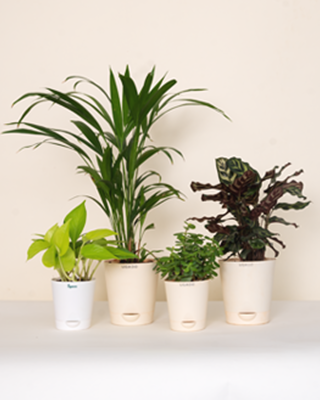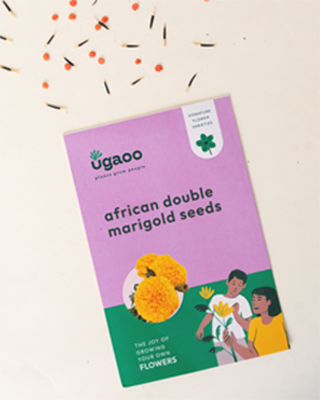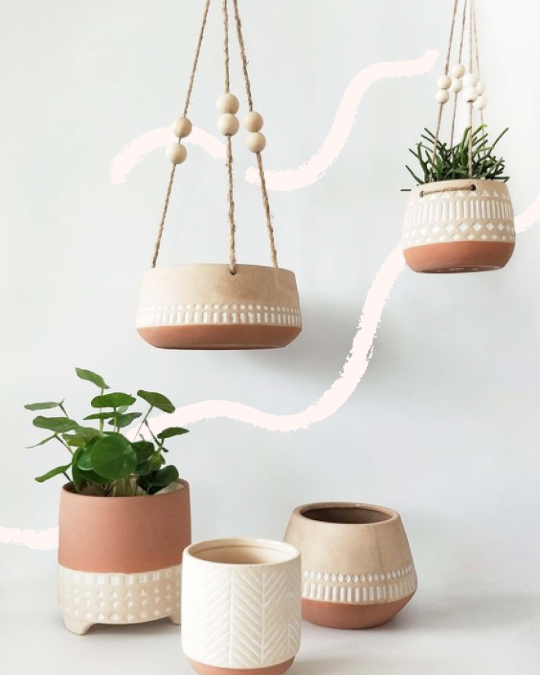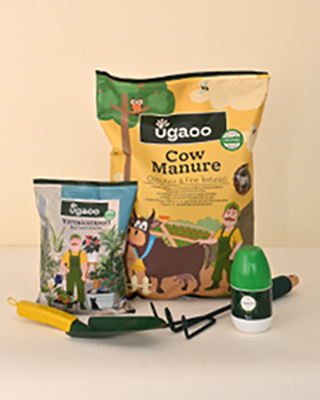Bringing home a plant is like making a new friend—green, quiet, and full of life! Whether you're nurturing your first leafy buddy or trying to keep your third succulent alive (we’ve all been there!), plant care doesn’t have to be overwhelming.
With the right tips and a little love, taking care of plants can be simple, joyful, and super rewarding.
Think of this as your ultimate beginner’s guide to becoming a proud and confident plant parent—because every green journey starts with a single sprout!
• Let's Simplify Your Plant Care with Some Basic Indoor Plant Care Tips!

Caring for plants might seem intimidating at first, but with a few easy-to-follow basics, anyone can master the art of plant parenting. From watering schedules to sunlight needs, each plant has its own way of communicating.
The key is to observe, learn, and enjoy the process! Here’s your simplified plant care guide—think of it as Plant Care 101 for every new green buddy in your home!
1. Watering Wisely — Not Too Much, Not Too Little

Water is life—but too much of anything is never good!
One of the most common mistakes new plant parents make is overwatering. So, as a rule of thumb, always check the top 2 inches of soil with your finger; if it feels dry, it’s time to water!
Pro tip: Always use pots with drainage holes to prevent root rot, and try to water early in the day to let the plant absorb moisture better.
Explore Our Self-Watering Krish Pots to Ensure Happy Plants!
2. Let There Be (The Right) Light

Sunlight is food for your plants, but hey, not all plants love direct rays!
Some thrive in bright, indirect light (like near a window with sheer curtains), while others prefer low-light corners.
Before placing your plant, get to know its light needs—tropical plants like Monsteras and Birds of Paradise often prefer filtered light, while succulents and cacti love sunny spots.
Keep in mind: If your plant starts leaning towards the light or its leaves look dull, it might be asking for a sunnier space. Rotate your pots regularly to help plants grow evenly on all sides.
3. Pruning = Plant TLC

Pruning isn’t just for keeping plants tidy—it helps them grow better!
Snipping away dead, yellowing, or leggy leaves encourages new and healthier growth. It also improves airflow and prevents disease.
Always use clean, sharp scissors or pruners, and never remove more than 25% of the plant at once. For flowering or fruiting plants, regular pruning can boost blooms and productivity.
And don’t worry—pruning may seem scary at first, but your plant will thank you with lush new growth in no time.
4. Fertilization: Boost That Growth!

Plants need more than just water and sunlight—they also need the right nutrients!
Fertilizing your plant every 4–6 weeks during the growing season (spring and summer) helps support new leaves, flowers, and overall health.
Use a mild, balanced fertilizer or a plant-specific one like Ugaoo's Plant Food Fertilizer Sticks for foliage plants and Bloom Sticks for flowering!
Pro tip: Skip fertilizing during winters when most plants are resting.
5. Humidity Matters (More Than You Think)

Some houseplants—especially tropical varieties like ferns, calatheas, and peace lilies—love humidity.
If the air is too dry (especially in AC or heated rooms), their leaves may crisp up. An easy fix? Mist them occasionally with a mister, place a pebble tray filled with water under the pot, or group plants together to create a mini humid zone.
Your green babies will feel right at home!
6. Pest Control: Always Keep the Bugs Away!

Pests can be sneaky, but they’re manageable with a just little vigilance.
Common houseplant pests like mealybugs, spider mites, or aphids can harm your plant if left unchecked. So, keep an eye out for sticky leaves, white fuzz, or webbing.
If you spot trouble, isolate the plant and treat it with Ugaoo's Neem Oil Spray or Mealybug Spray. Wiping leaves with a damp cloth also helps remove pests manually.
7. Repotting to Refresh

Just like us, plants outgrow their homes. When roots start peeking out of the drainage holes or the growth slows down despite regular care, you know it's repotting time!
Repotting doesn’t always mean moving to a bigger pot—it could also mean refreshing the soil to replenish nutrients.
If you're changing the pot, use one that’s just 1–2 inches larger in diameter, and always choose a well-draining soil mix (like Ugaoo's Pot-O-Mix) for your plant.
Repotting gives roots more room to breathe and encourages healthy growth. It’s like hitting the reset button for your plant!
8. Pick the Right Pot

Explore Pots and Planters for Your Plants!
Choosing the right pot isn’t just about aesthetics—it directly affects your plant’s health.
Always go for pots with drainage holes to prevent soggy soil and root rot. Terracotta pots are great for plants that like drier conditions, while plastic pots work best for plants that need extra moisture.
Make sure the pot size suits your plant’s current root system—not too tight, not too roomy. And yes, matching pots to your home décor? That’s a total bonus!
9. Clean Leaves, Happy Plants

Dust doesn’t just dull your plant’s shine—it blocks sunlight and reduces photosynthesis.
So, every couple of weeks, gently wipe your plant’s leaves with a soft, damp cloth to keep them dust-free and breathing easy.
For plants with small or fuzzy leaves like the Rabbit's Foot Fern, use a soft brush or give them a gentle rinse in the shower.
Clean leaves help your plant absorb light better, stay pest-free, and look absolutely stunning on your shelf or windowsill.
So, you see—plant care isn’t complicated, it’s just about understanding, observing, and enjoying the process!
With these simple basics, you’re all set to grow a thriving green space that brings joy, beauty, and a whole lot of leafy love into your everyday life.
Happy gardening!
Explore All Things Gardening on sloslhub.com or visit our retail stores to get the full gardening experience!




























